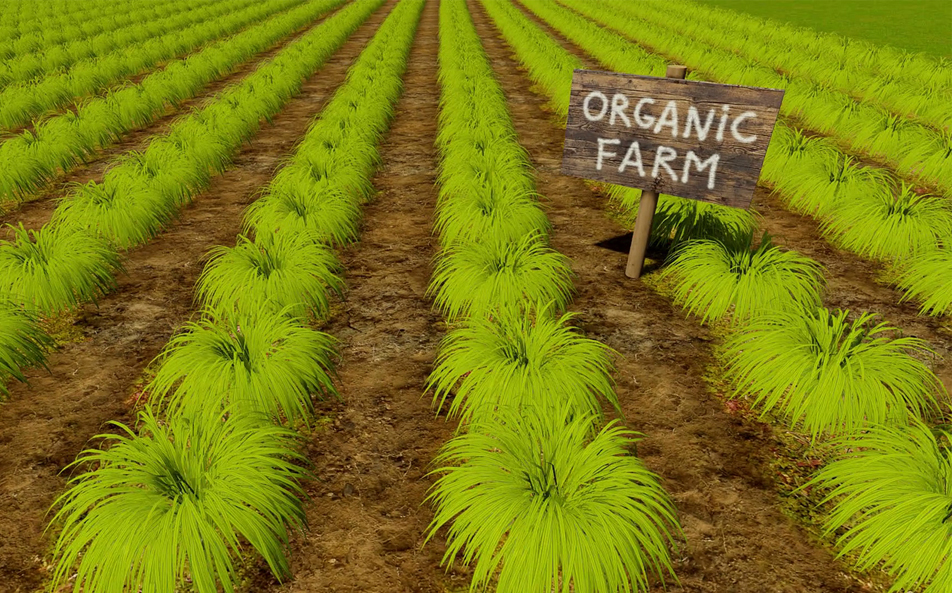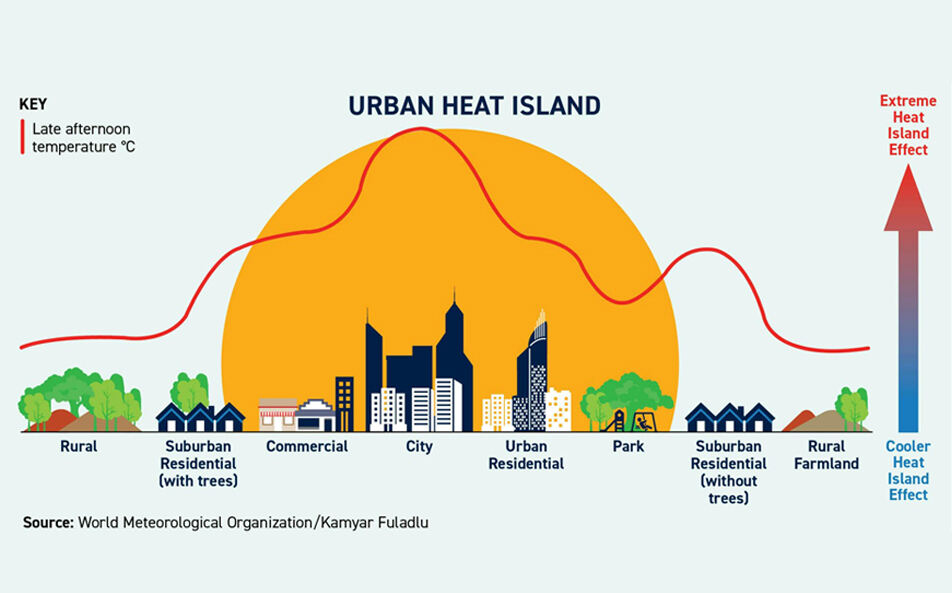
The United Indian

Agriculture is the backbone of India's economy, employing a significant portion of the population and contributing substantially to the nation's GDP. However, traditional farming methods have often led to environmental degradation, soil fertility loss, and decreased biodiversity. In response, organic farming has emerged as a sustainable alternative, promoting environmental health, economic profitability, and social equity. This blog explores the significance of organic farming in India and its pivotal role in fostering sustainable agriculture.
Understanding Organic Farming
Organic farming is an agricultural approach that emphasizes the use of natural inputs and processes to cultivate crops and rear livestock. It avoids synthetic fertilizers, pesticides, genetically modified organisms (GMOs), and growth hormones. Key practices include crop rotation, green manure, composting, biological pest control, and maintaining soil health through natural means. Unlike conventional farming, which often relies heavily on chemical inputs, organic farming focuses on enhancing the natural ecosystem to improve agricultural productivity.
The Current State of Organic Farming in India
India has witnessed a significant shift towards organic agriculture in recent years. As of March 2024, the country had approximately 1.76 million hectares of certified organic farming land, with an additional 3.63 million hectares under conversion to organic practices. This expansion reflects a growing awareness and adoption of sustainable farming methods.
In terms of certified organic area globally, India ranks fourth, with Madhya Pradesh leading domestically by dedicating over 1.5 million hectares to organic farming, followed by Maharashtra and Rajasthan.
The Role of Organic Farming in Sustainable Agriculture
- Environmental Benefits
- Soil Health Improvement: Organic farming enhances soil structure and fertility by increasing organic matter content and promoting microbial activity. Practices like crop rotation and composting contribute to healthier soils, reducing erosion and degradation.
- Reduced Chemical Pollution: By eliminating synthetic pesticides and fertilizers, organic farming minimizes chemical runoff into water bodies, thereby protecting aquatic ecosystems and reducing water pollution.
- Biodiversity Conservation: Organic farms often host a greater variety of plant and animal species compared to conventional farms. The avoidance of chemicals and the use of diverse cropping systems create habitats conducive to wildlife, supporting biodiversity.
- Economic Benefits
- Market Growth: The Indian organic food market has been experiencing robust growth. In the fiscal year 2021, the market was valued at approximately INR 22 billion and is projected to reach about INR 64 billion by 2025. This growth indicates increasing consumer demand and potential profitability for organic farmers.
- Premium Pricing: Organic products often command higher prices in the market due to their perceived health benefits and quality, providing farmers with better income opportunities.
- Reduced Input Costs: By relying on natural inputs and on-farm resources, organic farmers can reduce expenditures on expensive synthetic fertilizers and pesticides, leading to cost savings.
- Health Benefits
Organic farming reduces exposure to harmful pesticides and chemicals, resulting in food products that are safer for consumption. This practice benefits both consumers and farmworkers by lowering health risks associated with chemical exposure.
Challenges in Organic Farming Adoption
Despite its benefits, the widespread adoption of organic farming in India faces several challenges:
- Transition Period: Converting from conventional to organic farming involves a transition period during which farmers may experience reduced yields and increased labor, without immediate access to organic price premiums.
- Certification Process: Obtaining organic certification can be time-consuming and costly, posing a barrier for small-scale farmers. The certification process requires adherence to strict standards and regular inspections.
- Market Access: While the demand for organic products is growing, accessing markets that offer fair prices remains a challenge, especially for farmers in remote areas.
- Knowledge and Training: There is a need for more widespread education and training programs to equip farmers with the necessary skills and knowledge to implement organic practices effectively.
Government Initiatives and Policies Supporting Organic Farming
Recognizing the importance of organic farming in India, the government has launched several initiatives to promote its adoption:
- Paramparagat Krishi Vikas Yojana (PKVY): This scheme promotes cluster-based organic farming with Participatory Guarantee System (PGS) certification. It provides financial assistance of INR 50,000 per hectare for three years, directly benefiting farmers through Direct Benefit Transfer (DBT).
- Mission Organic Value Chain Development for North Eastern Region (MOVCDNER): Aims to develop certified organic production in a value chain mode to link growers with consumers and support the development of the entire value chain.
- National Mission for Sustainable Agriculture (NMSA): Focuses on enhancing agricultural productivity, particularly in rainfed areas, through integrated farming, water use efficiency, soil health management, and resource conservation.
- Participatory Guarantee System (PGS-India): A quality assurance initiative that is locally relevant, emphasizing the participation of stakeholders, including producers and consumers, and operating outside the frame of third-party certification.
Future Prospects and Recommendations
To further promote organic farming in India, the following steps are recommended:
- Awareness and Education: Implement comprehensive awareness programs and training sessions to educate farmers about the benefits and techniques of organic farming.
- Research and Development: Invest in research to develop region-specific organic farming practices and high-yielding organic crop varieties.
- Market Development: Strengthen supply chains, establish organic markets, and facilitate better market access for organic farmers to ensure they receive fair prices.
- Policy Support: Continue and expand government support through subsidies, incentives, and policies that encourage the adoption of organic practices.
- Consumer Engagement: Educate consumers about the benefits of organic products to drive demand and support for organic farming.
Conclusion
Organic farming in India holds immense potential to transform agricultural industry meanwhile promoting sustainability, enhancing farmer livelihoods, and ensuring food security. While challenges exist, concerted efforts from the government, farmers, and consumers can pave the way for a more sustainable and health-conscious agricultural system. Embracing organic farming is not just a choice but a necessity for a resilient and prosperous future.
FAQs Section
1. What is organic farming, and how is it different from conventional farming?
Organic farming is a method that avoids synthetic fertilizers, pesticides, and GMOs, using natural techniques like composting and crop rotation. Unlike conventional farming, it focuses on soil health, biodiversity, and sustainability.
2. Why is organic farming important for sustainable agriculture in India?
Organic farming enhances soil fertility, reduces chemical pollution, conserves water, and promotes biodiversity, making it crucial for a sustainable and eco-friendly agricultural system.
3. What are the major challenges faced by organic farmers in India?
Challenges include high certification costs, lower initial yields, limited market access, lack of awareness, and the transition period from conventional to organic farming.
4. What government schemes support organic farming in India?
Key schemes include Paramparagat Krishi Vikas Yojana (PKVY), National Mission for Sustainable Agriculture (NMSA), and the Participatory Guarantee System (PGS-India) for organic certification.
5. Which states in India lead in organic farming?
Madhya Pradesh has the largest certified organic farming area, followed by Maharashtra, Rajasthan, and Odisha. The Northeast region is also emerging as an organic hub.
6. How can consumers identify certified organic products in India?
Look for certifications like PGS-India (for domestic products) and NPOP (National Programme for Organic Production), ensuring the product meets organic farming standards.
Read more in Environment
May 27, 2025
TUI Staff
May 27, 2025
TUI Staff

Stay Tuned with The United Indian!
Our news blog is dedicated to sharing valuable and pertinent content for Indian citizens. Our blog news covering a wide range of categories including technology, environment, government & economy ensures that you stay informed about the topics that matter most. Follow The United Indian to never miss out on the latest trending news in India.
©The United Indian 2024









